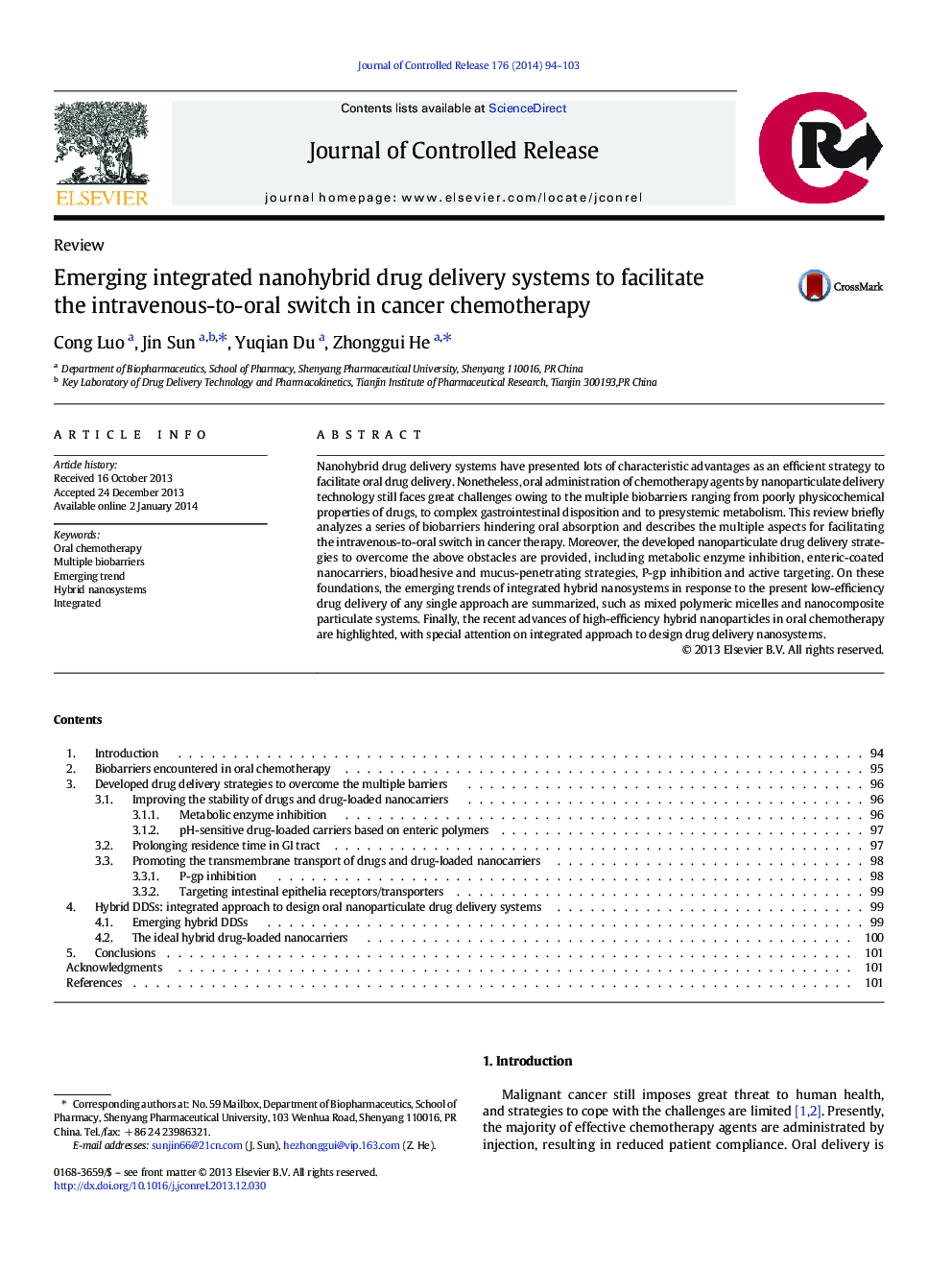| Article ID | Journal | Published Year | Pages | File Type |
|---|---|---|---|---|
| 1424117 | Journal of Controlled Release | 2014 | 10 Pages |
Nanohybrid drug delivery systems have presented lots of characteristic advantages as an efficient strategy to facilitate oral drug delivery. Nonetheless, oral administration of chemotherapy agents by nanoparticulate delivery technology still faces great challenges owing to the multiple biobarriers ranging from poorly physicochemical properties of drugs, to complex gastrointestinal disposition and to presystemic metabolism. This review briefly analyzes a series of biobarriers hindering oral absorption and describes the multiple aspects for facilitating the intravenous-to-oral switch in cancer therapy. Moreover, the developed nanoparticulate drug delivery strategies to overcome the above obstacles are provided, including metabolic enzyme inhibition, enteric-coated nanocarriers, bioadhesive and mucus-penetrating strategies, P-gp inhibition and active targeting. On these foundations, the emerging trends of integrated hybrid nanosystems in response to the present low-efficiency drug delivery of any single approach are summarized, such as mixed polymeric micelles and nanocomposite particulate systems. Finally, the recent advances of high-efficiency hybrid nanoparticles in oral chemotherapy are highlighted, with special attention on integrated approach to design drug delivery nanosystems.
Graphical abstractThe integrated multiple nanohybrid oral carriers considering the whole absorption process, show distinct advantages in facilitating the intravenous-to-oral switch in cancer chemotherapy.Figure optionsDownload full-size imageDownload high-quality image (209 K)Download as PowerPoint slide
